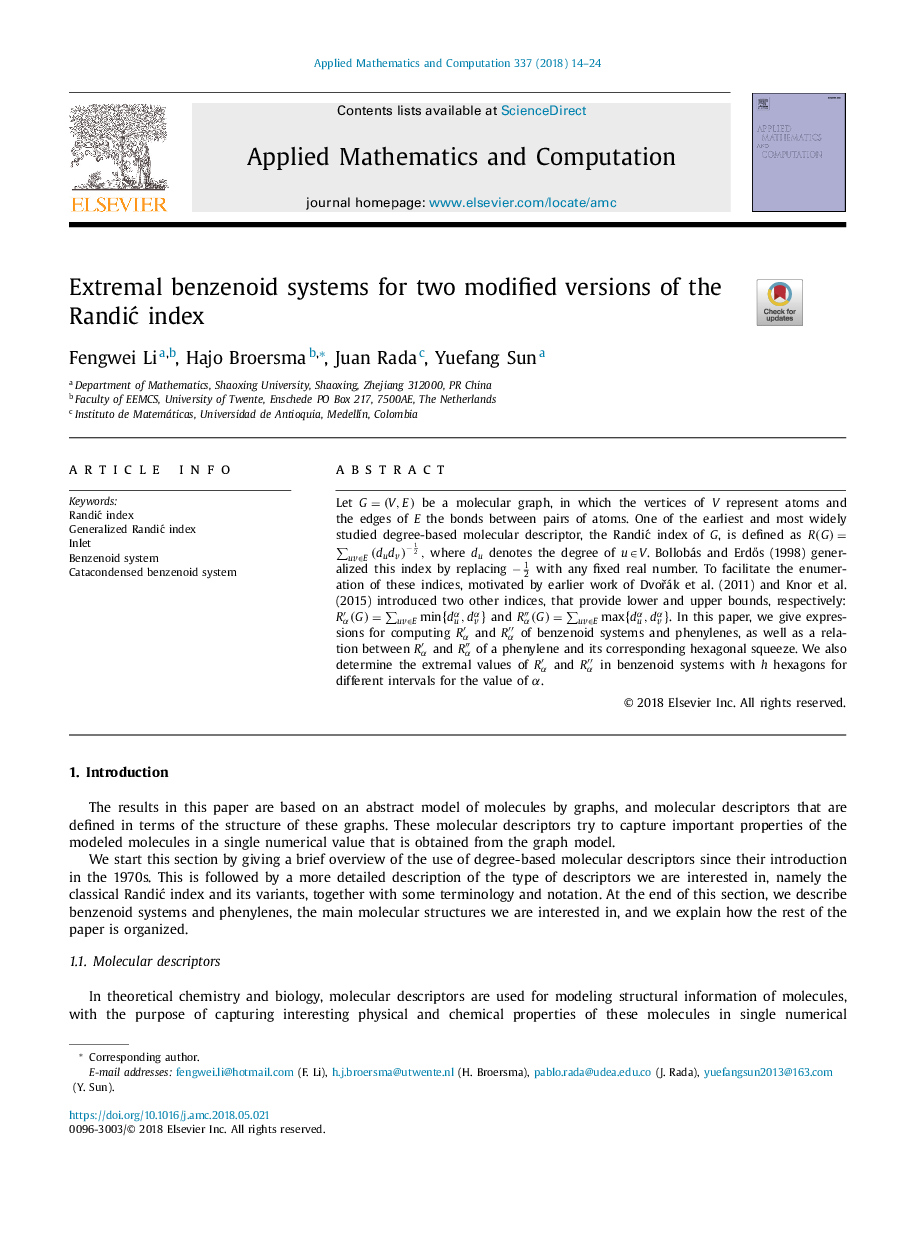| Article ID | Journal | Published Year | Pages | File Type |
|---|---|---|---|---|
| 8900684 | Applied Mathematics and Computation | 2018 | 11 Pages |
Abstract
Let G=(V,E) be a molecular graph, in which the vertices of V represent atoms and the edges of E the bonds between pairs of atoms. One of the earliest and most widely studied degree-based molecular descriptor, the RandiÄ index of G, is defined as R(G)=âuvâE(dudv)â12, where du denotes the degree of uâ¯ââ¯V. Bollobás and ErdÅs (1998) generalized this index by replacing â12 with any fixed real number. To facilitate the enumeration of these indices, motivated by earlier work of DvoÅák et al. (2011) and Knor et al. (2015) introduced two other indices, that provide lower and upper bounds, respectively: Rαâ²(G)=âuvâEmin{duα,dvα} and Rαâ³(G)=âuvâEmax{duα,dvα}. In this paper, we give expressions for computing RαⲠand RαⳠof benzenoid systems and phenylenes, as well as a relation between RαⲠand RαⳠof a phenylene and its corresponding hexagonal squeeze. We also determine the extremal values of RαⲠand RαⳠin benzenoid systems with h hexagons for different intervals for the value of α.
Keywords
Related Topics
Physical Sciences and Engineering
Mathematics
Applied Mathematics
Authors
Fengwei Li, Hajo Broersma, Juan Rada, Yuefang Sun,
